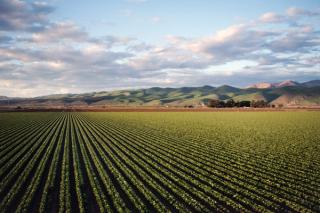
Business beyond compliance: The need for human rights action
by Heba Megahed, Miguel Oyarbide
View post

Within terrestrial ecosystems, agriculture and forestry involve by far the greatest area of ecosystem modification and conversion of natural habitats, and modern intensive agricultural practices in particular use high volumes of polluting substances that are harmful to biodiversity, and arguably in many cases, human health. These landscapes therefore pose significant nature related risks and opportunities for modern society.
More broadly, declines of nature contribute to climate change and reduce climate resilience; preventing further losses of nature and restoring it is therefore beneficial on a number of fronts.
It is important to acknowledge that farming and biodiversity can be great allies. Indeed, many species are well adapted to farmland ecosystems, particularly those based on traditional practices that may have been around for centuries or longer. The trick will be achieving the right balance of practices to achieve food security, prosperous local economies and the long-term resilience and viability of modern societies through enhancement of farmland ecosystem services.
Alongside food production, farmland has potential to enhance carbon sequestration, biodiversity, water regulation, and soil and nutrient retention. Policy, guidance, legislation, and corporate policies are starting to move toward supporting a more regenerative approach to agriculture.
In December 2022, nearly 200 countries reached agreement on the post 2020 Kunming-Montreal Global Biodiversity Framework (GBF). The ambitions within this are considered critical to global social and economic security. The broad ambition is to significantly reduce our nature related risks and increase our resilience to climate change and resource stochasticity. Nature within farming landscapes will be critical to achieving these ambitions.
GBF goals and targets and targets of particular relevance to agriculture include:
For many large corporates the relevance of farmland nature will feed up through supply chains in the form of, for example, fibre for textiles; ingredients for the food, drink, pharmaceuticals, cosmetics, perfumes, and chemical industries; and biofuels. In due course corporates will need to understand how these supply chains are impacting nature and set targets to reduce nature related risks via reporting requirements in line with the Task Force for Nature Related Financial Disclosures (TNFD). TNFD is soon likely to become mandatory in line with Target 15 of GBF.
GBF Target 15:
Take legal, administrative or policy measures to encourage and enable business, and in particular to ensure that large and transnational companies and financial institutions: (a) Regularly monitor, assess, and transparently disclose their risks, dependencies and impacts on biodiversity including with requirements for all large, as well as, transnational companies and financial institutions along their operations, supply and value chains and portfolios; (b) Provide information needed to consumers to promote sustainable consumption patterns; Report on compliance with access and benefit-sharing regulations and measures, as applicable; in order to progressively reduce negative impacts on biodiversity, increase positive impacts, reduce biodiversity-related risks to business and financial institutions, and promote actions to ensure sustainable patterns of production.
Modern society is not the first to be at risk from agricultural practices, severe soil erosion due to the development of the plough is associated with the demise of various societies throughout history. It is an issue discussed in the writing of Plato, evidenced by archaeology in association with bronze age societies in Greece, and is even thought to have resulted in the Roman port of Ostia becoming stranded several miles inland as eroded soil became deposited in river deltas[1]. In more recent history the great dust bowl of North America speaks to how severe an issue soil erosion can be, even today in Aberdeenshire in Scotland where I grew up I am hearing of clouds of dust and have seen first-hand streams and rivers running brown with top soil during the ploughing season. At the same time, I have observed the field margins getting narrower, the spaces where the skylarks used to breed when I was a child are now ploughed and fence lines are unstable from soil disturbance so close by.
It would be wrong to place all this environmental damage on the shoulders of farmers who are responding to subsidies, guidance, and market forces in an economically challenging sector. They need our support to make providing food security alongside other ecosystem services a viable business option. The inconvenient truth is that our current economic model is giving away natural capital for free, eroding our resource base. If we continue not to value nature, then we will quickly reach a point of ecosystem collapse. Soil loss from ploughed fields globally is about 1mm/ year but soil production is about 100 x slower resulting in a couple of centimetres of loss every decade or so[1].
Regenerative or conservation agriculture is an approach to farming that minimises soil disturbance and takes advantage of natural process to promote plant health, pest and disease control, soil fertility and water retention. There are three main principals[1]:
These approaches are already proving very effective in areas of North America, where traditional methods are barely viable. One example of crop rotation is that pioneered by Cronin Farms of South Dakota, which transitioned to no-till 30 years ago, and has seen its fragile perennial pastures transformed from season-long grazing to a rotational system. Forage and cover crops are now integrated into the diverse crop rotations, and either swath or bale grazed during the autumn and winter, which improves nutrient cycling, soil health and biological activity. In the spring and summer, the cattle herd grazes grassland along the Missouri River breaks. Meanwhile, in the UK, the Department for Environment, Food & Rural Affairs (Defra) has launched a Sustainable Farming Initiative, which includes guidance on min-till or no-till farming.
Practitioners are also helping to support each other to make the transition, and conferences such as Groundswell are communicating evidence of the cost/benefit trade-offs, such as better water retention, and reducing need for pesticides and fertilisers as systems mature. In addition, market mechanisms for monetising some of the environmental benefits such as carbon sequestration are developing, e.g. via carbon, biodiversity and nutrient credits.
For farmers and corporates looking at their supply chains, one of the challenges will be evaluating and setting targets for nature, in a robust cost-effective manner, so that investors, customers and regulators can have confidence in products’ nature-related impacts and benefits. In a world where green credentials are increasingly important, the urgency of considering this cannot be over-emphasised.
SLR have a wide range of environmental services including a dedicated natural capital team who are working with companies on everything from corporate nature strategies, to TCFD and TNFD reporting, and biodiversity and nature baselining approaches for sites, portfolios, and supply chains globally. We would be very pleased to discuss any of the challenges raised in the article with companies and organisations interested in understanding biodiversity and nature related risks and opportunities within their sites or supply chains.
-------------------------------------------------------------------------------
[1]David R. Montgomery. Growing a revolution: bringing our soils back to life. W.N. Norton. New York & London.
[2] https://groundswellag.com/

by Heba Megahed, Miguel Oyarbide

